14 Fascinating Symbols From Ancient Egypt
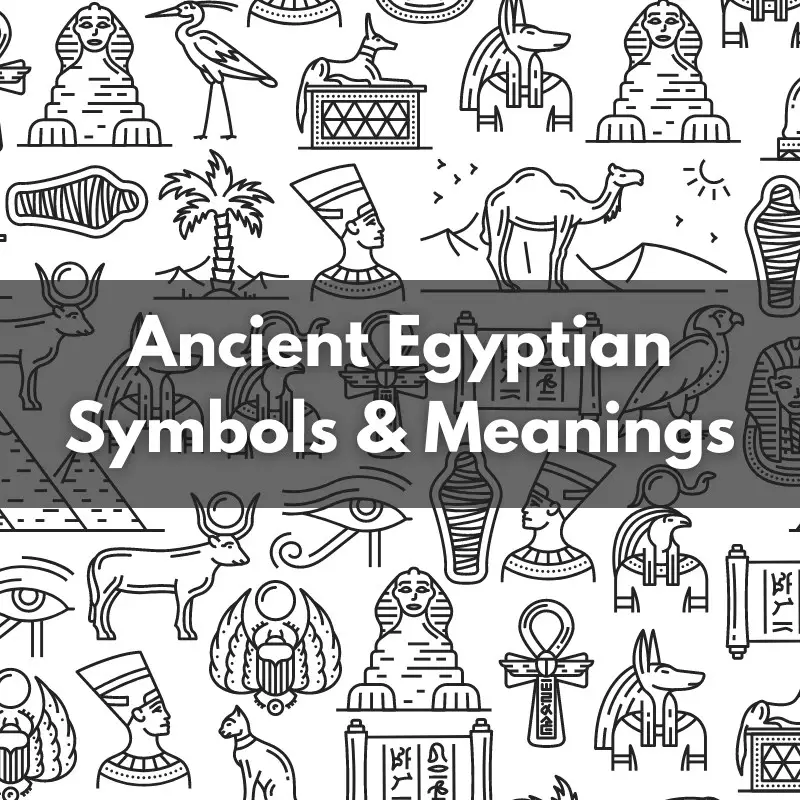
Ancient Egypt is known for its rich history and culture, which is often reflected in its symbols and hieroglyphics. The ancient Egyptians had many symbols that were a part of their daily lives. There were hidden meanings to most of them, and the more you know about the culture, the more you can understand its true significance.
From the Ankh and the Eye of Horus to the Scarab Beetle and the Winged Sun, these symbols represented different aspects of Egyptian life and beliefs. In this blog post, we’ll take a look at some of the most popular ancient Egyptian symbols and their meanings.
The History Of Ancient Egyptian Symbols
The discovery of the Rosetta Stone in 1799 was a significant key in deciphering hieroglyphics. The stone, which is inscribed with a decree from Egyptian King Ptolemy V, helped scholars finally decipher the long-lasting code of the hieroglyphs. Since then, we’ve been able to make great strides in understanding these fascinating symbols.
The Rosetta stone was inscribed three times: Once in hieroglyphics, another in Demotic (Egyptian script at the time), and in Ancient Greek. At the time, nobody could read hieroglyphics, so the decipherment process was a long and tedious one. However, thanks to the work of scholars like Jean-Francois Champollion, we now know much more about ancient Egyptian culture and its symbols.
Ancient Egyptian Symbols & Meanings
The Eye of Horus

One of the most well-known symbols from Ancient Egypt, the Eye of Horus was originally a symbol of protection and royal power. The eye is usually depicted as a falcon’s eye, and it was associated with the god Horus. In later times, it became a symbol of healing and protection.
The Eye of Horus is often seen in funerary texts and tomb paintings. It was thought to provide protection for the dead and help them on their journey to the afterlife. The symbol was also used as a medical amulet, thought to heal various eye conditions.
The Eye Of Ra
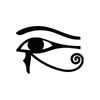
It is commonly believed that The Eye Of Ra is the sun god’s right eye, and The Eye Of Horus is the moon god’s left eye. However, both eyes actually symbolize different aspects of the gods’ power. The Eye Of Ra represented the sun god’s power to see everything, while The Eye Of Horus represented the moon god’s ability to heal.
The two symbols were often used together in royal seals and amulets. They were thought to offer protection and power to the wearer.
The Ankh
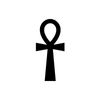
The Ankh is one of the most ancient and commonly used symbols in Egyptian culture. It represents eternal life and was often used in funerary texts and tomb paintings. The Ankh is also known as the key of life and was thought to be a powerful amulet that could open the gates of the afterlife.
The Ankh is often shown being carried by gods and pharaohs. It is also sometimes seen in the hands of Isis, the goddess of motherhood and fertility.
The Scarab Beetle
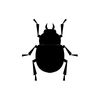
The scarab beetle was a very popular symbol in Ancient Egypt. It was associated with the sun god Khepri and was often seen in tomb paintings and funerary texts. The scarab beetle was also thought to be a symbol of rebirth and regeneration.
The scarab beetle lays its eggs in dung, which was seen as a symbol of new life. The ancient Egyptians believed that the scarab beetle was a sacred creature that could help them in the afterlife.
The Djed Column
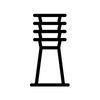
The djed is a symbol of stability and strength. It was often used in funerary texts and tomb paintings as a symbol of eternal life. The djed column is also known as Osiris’s backbone, the underworld god.
The djed column is often shown with the ankh and the Eye of Horus. It is also sometimes shown with the sun disk, another important symbol in Ancient Egypt.
The Winged Sun

The winged sun disk is typically believed to have originated in the Old Kingdom period, before Ancient Egyptian civilization. Because of the depiction of the sun, it is often associated with the sun god Ra.
However, the Winged Sun was originally the symbol of a god called Behdety. Behdety was a falcon god who was associated with the healing of the eye. He was also sometimes shown as a winged sun.
The Winged Sun is often shown in royal seals and amulets. It is believed to represent protection and power.
The Lotus Flower

The lotus flower is a symbol of rebirth and regeneration. The flower was often depicted in art and literature and was used in many religious ceremonies.
The lotus flower blooms in the mud and is thought to represent the rising sun. The ancient Egyptians believed that the lotus flower could help them in the afterlife.
The Feather Of Ma’at

Ma’at is the goddess of truth, justice, and order. Her feather was used as a symbol of truth and justice in Ancient Egyptian society. The feather of Ma’at was often used in funerary texts and tomb paintings.
The feather of Ma’at was also used as a way to determine where a soul would go after death. It was weighed against the heart of the deceased in the judgement of the dead. If the heart was heavier than the feather, it was thought that the person had led a life full of sin and would be sent to the underworld.
The Sphinx

The sphinx is a mythical creature with the body of a lion and the head of a human or animal. The sphinx was considered to be a guardian of knowledge and wisdom.
Today, the sphinx is one of the most famous symbols of Ancient Egypt. It is often seen in art and literature and is one of the most recognizable monuments in the world.
The Pyramid

The pyramid is one of the most iconic symbols of ancient Egypt. Pyramids were built as tombs for pharaohs and their consorts and were often adorned with hieroglyphs and artworks.
The ancient Egyptians believed that the pyramid was a symbol of the sun god Ra. The pyramid was thought to be a place of rebirth and regeneration.
The Uraeus
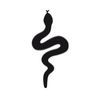
The uraeus is a symbol of power and royalty. It is often shown on the headdresses of pharaohs and gods. The Uraeus is a symbol for the goddess Wadjet – who was often represented as a cobra.
The Obelisk

An obelisk is a tall, slender monument that tapers to a point at the top – just like a mini pyramid. Obelisks were often erected in pairs at the entrances of temples or other important buildings. Obelisks were initially created to worship the sun god Ra, but they later came to be associated with other Egyptian gods as well.
The obelisk is a symbol of power and strength. It is also thought to represent the rays of the sun.
The Crook and Flail
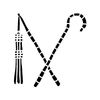
The crook and flail are two symbols that are often seen together. The crook is a staff that represents authority, while the flail is a tool that represents power or dominion. Together, they symbolize the pharaoh’s power over his people.
Originally, the crook and flail were used by the god Osiris, but they were later adopted by the pharaohs as symbols of their own power.
Ouroboros

The Ouroboros is a symbol of eternal life. It is often shown as a snake or dragon eating its own tail. The Ouroboros represents the cyclical nature of life and death.
The ancient Egyptians believed that the Ouroboros represented the sun god Ra. Ra was thought to be reborn each day as he rose in the east and set in the west.
The Ouroboros can also be seen as a symbol of alchemy and represents the process of transformation.
Conclusion
Ancient Egyptian civilization is one of the most fascinating cultures in human history due in large part to their use of symbols. While we didn’t cover all of them, these are just a few of the many popular symbols that were used in Ancient Egypt. Each symbol had its own meaning and importance in Egyptian society. What do you think these symbols represent? Do you think they still have meaning today?